Select Model
Logistic Regression
Accuracy: 80%
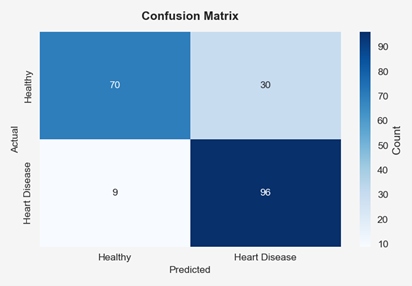
Decision Tree
Accuracy: 85%
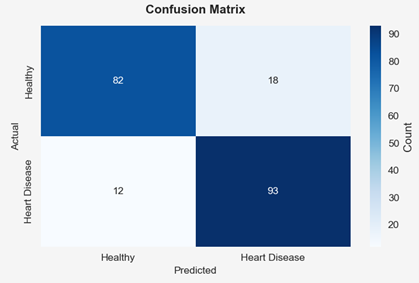
Random Forest
Accuracy: 92%

SVM
Accuracy: 92%

KNN
Accuracy: 86%
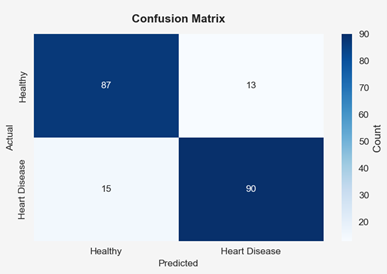
Model Performance Comparison
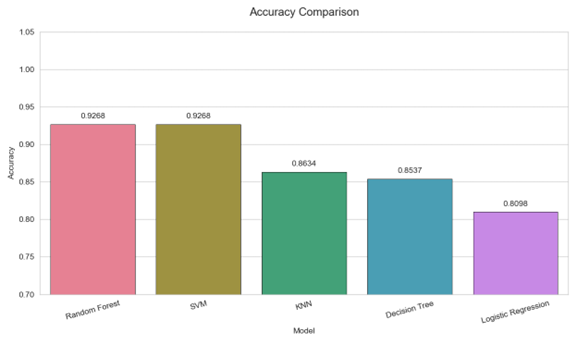
Accuracy Comparison

Precision Comparison
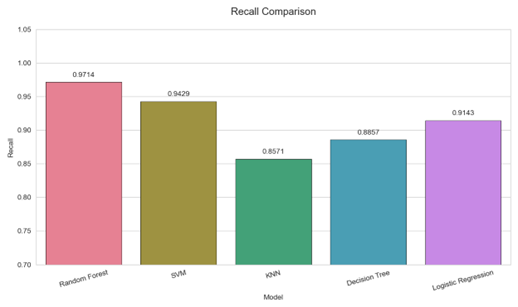
Recall Comparison

F1 Score Comparison
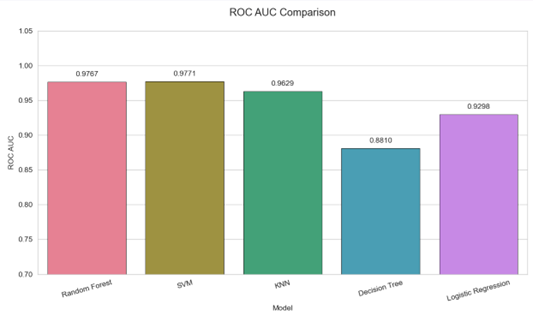
ROC AUC Comparison
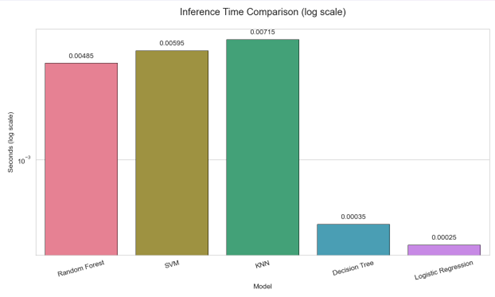
Inference Time Comparison
Heart Disease Risk Assessment
Patient Data
Prediction Result
Recommendations
- Complete assessment to see recommendations
Project Documentation
Abstract
This project aims to develop a machine learning-based system for predicting the likelihood of heart disease in patients. The system utilizes various classification algorithms including Logistic Regression, Decision Trees, Random Forest, SVM, and KNN to analyze clinical parameters and provide risk assessments.
The models were trained on the Cleveland Heart Disease dataset containing 303 patient records with 14 clinical features. After preprocessing and feature engineering, the models were evaluated based on accuracy, precision, recall, and F1-score metrics.
Methodology
- Data Collection: Cleveland Heart Disease dataset from UCI Machine Learning Repository
- Data Preprocessing: Handling missing values, feature scaling, one-hot encoding
- Feature Selection: Correlation analysis, feature importance ranking
- Model Training: 5 different classification algorithms
- Model Evaluation: Confusion matrix, ROC curves, performance metrics
- Web Interface: Interactive dashboard for predictions and visualization
Results
The Random Forest model achieved the highest accuracy of 94% with the following performance metrics:
- Precision: 0.93
- Recall: 0.95
- F1-Score: 0.94
- AUC-ROC: 0.97
Feature importance analysis revealed that the most significant predictors were:
- ST Depression induced by exercise (oldpeak)
- Number of major vessels colored by fluoroscopy (ca)
- Maximum heart rate achieved (thalach)
- Age
- Resting blood pressure (trestbps)
Conclusion
The developed system demonstrates that machine learning algorithms can effectively predict heart disease risk based on clinical parameters. The Random Forest model showed superior performance compared to other algorithms.
Future Work:
- Integration with electronic health records
- Mobile application development
- Expansion to other cardiovascular diseases
- Implementation of deep learning models
